Environment Justice Matters Vol. 3 Issue 15

Vol. 3 Issue 15
Featured
Celebrating A Great Chronicler of Our Troubled Times: K. P. Sasi
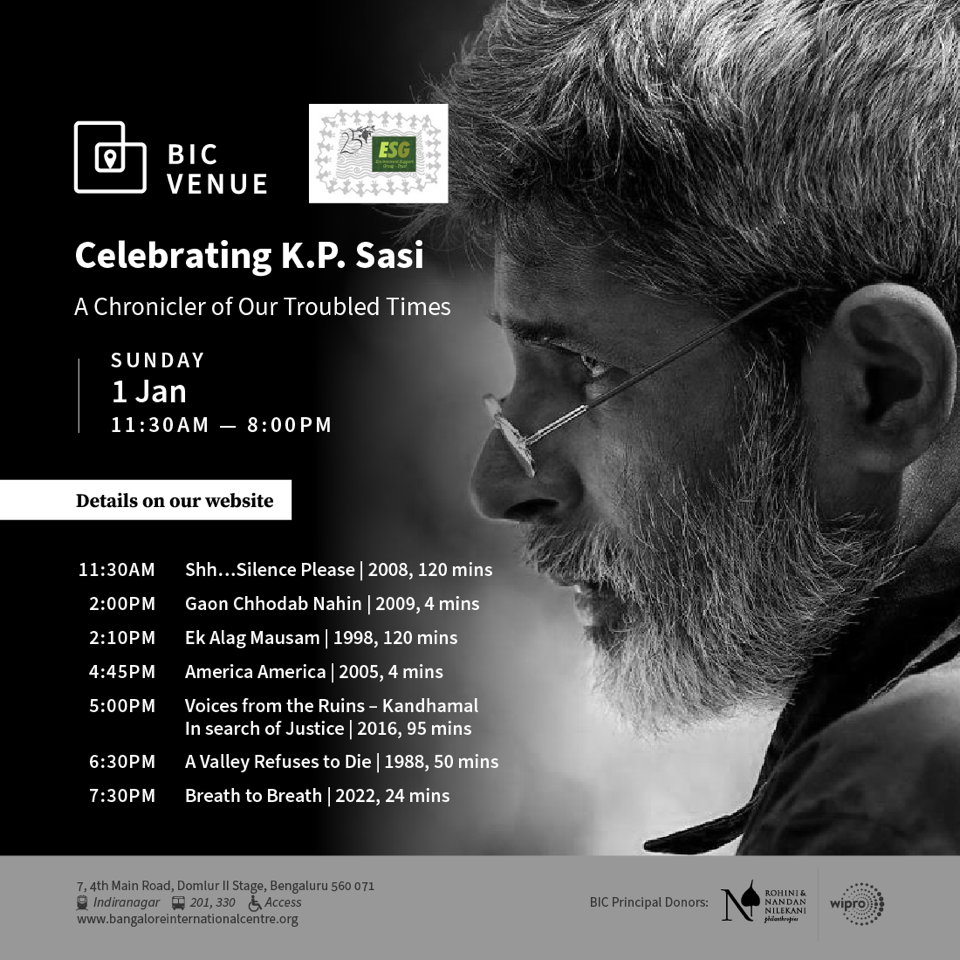
K. P. Sasi is popularly known as a filmmaker. But for Sasi, films were only a medium for exposing the hypocrisies latent in our world, as were his cartoons, poetry and writings. With wit and sarcasm, he tore into the indulgences of developmentalism, time and again, bringing to the fore its stark contradictions as also its terrible impacts and intergenerational implications. He dreamed of a world in which possessiveness would be a disease and deep humanism and ecocentrism would determine the quality of our brief time on this living planet. Through his life, equipped with his multiple talents (he was also an excellent musician), he worked to bring stories of the most vulnerable – adivasis, fisherfolk, urban poor, dissenters, victims of militarisation, etc. – into public consciousness. His endearing qualities drew him to be liked by one and all, and he left this world as he came into it – without any possessions. K P Sasi passed away on Christmas Day this year, following a brief illness.
To celebrate Sasi’s life, Bangalore International Centre (BIC) in collaboration with Environment Support Group (ESG) is showcasing a selection of his feature films and documentaries on 1st January 2023 at BIC auditorium. The screenings will be accompanied by discussions and conversations with Sasi’s colleagues, contemporaries and friends. Register for the event here.

An archive of Sasi’s work, which exemplifies his creativity and passion for justice, can be accessed here.
We share with you a collation of tributes to Sasi:
A true people’s warrior: Artists and activists mourn documentary filmmaker KP Sasi by Cris, The News Minute
Documentary filmmaker K.P. Sasi passes away by S.R. Praveen, The Hindu.
‘Mollywood director KP Sasi passes away’, Times of India.
Obituary: KP Sasi, a powerful icon of India’s resistance movements, is no more, by K.S. Shaji, The South First.
കെ.പി ശശി എന്ന സമരമനുഷ്യൻ |K P Shashi | Out Of Focus
കെ.പി ശശി : നിലയ്ക്കാത്ത പോരാട്ട ശബ്ദം by Satya Sagar
Blowing In The Wind In Vizhinjam – A Music Video In The Making
പയ്യ് (cow) – A video based on KP Sasi’s English poem, ‘Motherhood’ which was uploaded in March 2016.
Remembering K P Sasi, activist, film-maker, cartoonist & scholar I Dr Abhay Kumar I JNU
An Interview with activist-film-maker, K. P. SASI by Md. Eisa, Badre Alam Khan and Abhay Kumar
Marginalisation of Cultural Identities: K P Sasi talks to Abhay Kumar
Some of thoughts on K. P. Sasi by Anita Cheria
The Death Of An Activist – For K P Sasi by C. P. Surendran
A tribute to K. P. Sasi by Medha Patkar, colleagues of Narmada Bachao Andolan and National Alliance of People’s Movements (NAPM)
കെ.പി ശശിക്ക് പകരക്കാരിനില്ല by SP Udayakumar
ശശിക്ക് a poem by Kedar Mishra
K.P.Sasi: An Activist With Creative Expressions Compassionate and talented by Ram Puniyani
Hello 2023!
ESG ended the year 2022 with a small celebration on the 30th of December. Family members, friends, comrades and colleagues came together to recall the building of ESG over 25 years – the organisation formally turns 25 in April 2023.


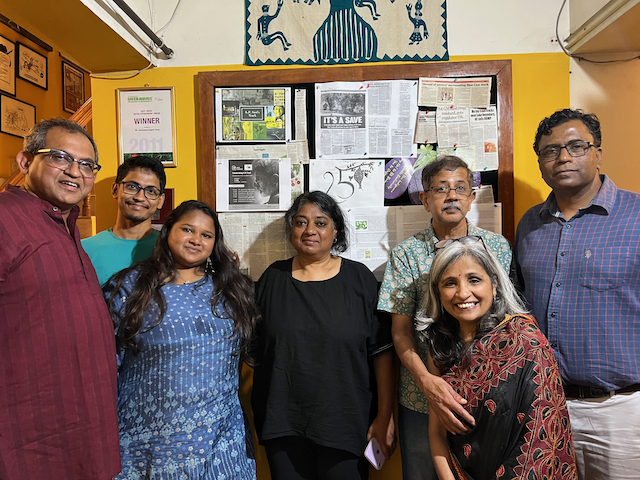



India Land and Development Conference 2022

The sixth edition of the India Land and Development Conference 2022 (ILDC 2022) was organised jointly by Azim Premji University and the NRMC Centre for Land and Governance from 7th to 9th December, 2022 on the theme ‘Global Pulls on Local Lands: Southern Perspectives’. Environment Support Group coordinated one session on “Flood Preparedness, Land Use Management, Resilience and Climate Change: Learning from flooding in Bangalore”. Speakers in the panel were Mr. L. K. Atheeq, IAS, Addl Chief Secretary, Karnataka Dept of Rural Development and Panchayat Raj, Mr. Rajeev Gowda, Chairman of Research Cell of Indian National Congress and former Member of Parliament (Rajya Sabha) and Bhargavi Rao of ESG. Leading economist and President of Centre for Budget and Policy Studies Dr. Vinod Vyasulu chaired the session[1] which was moderated by Leo Saldanha of ESG.
Bhargavi critiqued the Bengaluru Master Plan for its lack of civil society participation, which she believes is a major cause of the Bangalore floods. Shri L.K. Ateeq while speaking of encroachment on land said, “Increased pressure on land has made Commons the first casualty. This can be seen in the series of regularisation of unauthorised encroachments over the years in Bengaluru.”
The focus of the conference was on the needs of policy, practice, and academic engagement in relation to instruments such as Sustainable Development Goals (SDGs), Sustainable Food Systems (SFS), the Ukraine Crisis and the COVID-19 pandemic. It also discussed how the global soft laws around land such as Fit-for-Purpose (FFP), Responsible Investment Guidelines, Voluntary Guidelines on Responsible Governance of Tenure (VGGT) and Technology-aided Formalisation influence land governance in the Global South, especially in India. There was also emphasis on how the land rights of indigenous/traditional communities, forest dwellers, pastoralists, women, fishermen, farmers, etc. were impacted.
Statement on GM Mustard by DARE and ICAR
The Department of Agriculture Research and Education (DARE), Secretary and ICAR Director General, issued a detailed statement on various issues of GM mustard, and the following is a quote: “This Statement is therefore being issued in public interest to clarify that any opinion or article published on the subject by anyone not authorised or former employees of the Indian Council of Agricultural Research (ICAR) different from the stated documentations and decisions made by the regulatory authorities functioning under the EPA (1986) are not endorsed by the Council and are subjectable to any administrative procedures required in public interest.” In effect, ICAR has issued a most irrational, unscientific, undemocratic, illegal and preposterous order that simply has to be withdrawn.

Agricultural experts and social activists have hit out at the move, which comes at a time of widespread criticism of approval of environmental release of GM Mustard DMH-11, terming it a “gag order” – in effect a move to stop reality from reaching the people. They have argued that by this controversial and questionable order, authorities were trying to dub the “harsh reality” about GM crops on human health and the environment as “Myths”. Agriculture policy expert Devinder Sharma said, “Allowing the propagation of junked GM mustard varieties is actually aimed at opening the floodgates for risky and harmful GM foods in the country. The US is already pushing for the entry of GM rice and apples into India. We seem to be under tremendous US pressure to embrace GM groups”. A group of scientists from agricultural sciences, ecology and biotechnology have initiated an Open Statement condemning this order and demanding it be withdrawn immediately to save science and democracy, and farmers futures and consumer health in India. In another statement a call has been made for an open, scientific and democratic consultation on the release of GM Mustard, on the lines of those held by Jairam Ramesh when he was India’s Environment Minister over a decade ago.
Climate Change: A Global Perspective
In 2022, people all over the world have witnessed some of the worst weather events in the last two decades. The bomb cyclone, hurricane Ian and wildfires in the United States, floods in Pakistan, drought conditions in Europe and heatwaves in India are only the tip of the iceberg, considering the calamities yet to come if climate change is not tackled efficiently and collectively.

In Alaska, the reduction in ice is proving fatal as there is no barrier against storms and coastal erosion. Various fishing communities are suffering as their livelihood has been stolen. In Chile, the impacts of climate change revealed themselves in the form of a deadly heat wave which led to a surge in forest fires. Massive droughts in Mississippi have led to historically low water levels in the Mississippi river, making dredging and special water releases from upstream reservoirs necessary to ensure that the channels were navigable. In Portugal, the impact is in the form of extreme rains. Their meteorology institute, Instituto Português do Mar e da Atmosfera (IPMA), found that the rains this month were the highest amount of rain in 24 hours since 1931.
A study conducted by researchers of Birbal Sahni Institute of Palaeosciences (BSIP) in Lucknow claims that by 2070 the mangroves in India will reduce and shift landward by around 50 per cent, especially in the south. This is mainly because the coastal lines in the southwest and southeast will submerge, causing degradation of mangroves. Regions in the east, like Chilika, and Sundarbans along the east and north east coastlines, and Dwarka and Porbandar along the west coast, are likely to see comparatively lesser reduction and landward shift due to the differential response to precipitation and sea level change in different parts of the coastline.
The fact that there is still a weak response to protect mangroves, despite their phenomenal role in tackling cyclones and tsunamis, is worrying, and it is hoped that some of the takeaways of COP 27 will propel immediate action to protect mangroves from development and associated destruction.
Achieving net-zero emissions
During the pandemic, when emissions of carbon dioxide decreased, global emission of methane increased. Additionally, when nitrogen oxide (NOx) emissions were reduced, methane increased due to the absence of hydroxyl radical (OH), which is produced by NOx upon entering the atmosphere, responsible for breakdown of methane. A recent study found that if 90% of the new urban population choose to stay in newly built wooden buildings, the predicted carbon emissions for the next 60 years would reduce by 160 gigatonnes – predominantly because most old houses consume more energy to keep them warm during the frigid winters of temperate regions. These buildings combined with use of bio-based materials and forest products could be a solution to mitigate climate change. This also implies that construction with concrete and poor maintenance of built structures is a major contributor to climate change.

Achieving net-zero emissions is a part of the global efforts to prevent global warming from exceeding the 1.5℃ climate target set under the Paris Agreement in 2005 while currently greenhouse gas emissions are higher than when the target was set. In 2019, the world emitted 58.5 gigatonnes of carbon dioxide equivalent. While most countries are struggling to achieve net zero emissions by 2050 or even later, these countries have already reached the net zero goal – Bhutan, Comoros, Gabon, Guyana, Madagascar, Niue, Panama, Suriname. Gabon is one of the world’s largest ‘carbon sinks’ and is therefore a model of environmental conservation according to the UN. While most of these countries are rich in natural resources and have small populations, they still face the threat of becoming carbon dioxide emitters due to large-scale deforestation. In Madagascar, large-scale deforestation has seen a quarter of the country’s forest canopy cover disappear since 2000, and if this is unchecked, Madagascar will become a net carbon dioxide emitter by 2030.

While rainforests and wetlands are naturally large carbon sinkholes, a recent study finds that whales could play an invaluable role in tackling climate change by using their massive girth to store carbon. And owing to their longevity, they are one of the ocean’s largest living carbon pools. It is said that commercial hunting has decreased the whale population by 81%. Conservation of whales is imperative to substantially mitigate climate change.
In India, the Union Minister for Ministry of Environment, Forest and Climate Change, Ashwini Kumar Choubey, in response to a question in the Rajya Sabha said that by 2030, Emissions Intensity of India’s GDP will be reduced by 45 percent, and India will achieve about 50 percent cumulative electric power installed capacity from non-fossil fuel-based energy resources. He further said that this is a step towards achieving India’s long-term goal of reaching net-zero by 2070. It is unclear, however, by what measure the government plans to reduce the carbon footprint of renewable energy development which is consuming large tracts of biodiversity rich farmland, forests, grasslands and village commons.
Jagdeep Dhankar, Vice President of India, called for collective action to combat climate change and environmental destruction. While interacting with the 2021 cohort of the Indian Forest Service, he highlighted the importance of protecting India’s forest wealth, encouraged them to work closely with tribal communities and get first hand experience of their culture. He highlighted the Indian Constitution, apart from protecting and safeguarding forests, requires protection of the natural environment and to have compassion for living creatures as part of Fundamental Duties of Citizens.
On 16th December 2022, a SpaceX rocket holding a U.S.-French satellite launched to conduct a global water survey of Earth’s surface waters. The data compiled from the satellite every 21 days will be able to shed light on the impact of climate change, enhance ocean-circulation models, provide more accurate weather and climate forecasts, aiding in conserving freshwater supplies in arid areas.
Meanwhile, Bhargavi Rao weighs in on the implications of thoughtless and unsustainable renewable energy development in the year end edition of Mongabay’s Gigawatt.
Air Pollution in India: Cities Competing to be Worse?
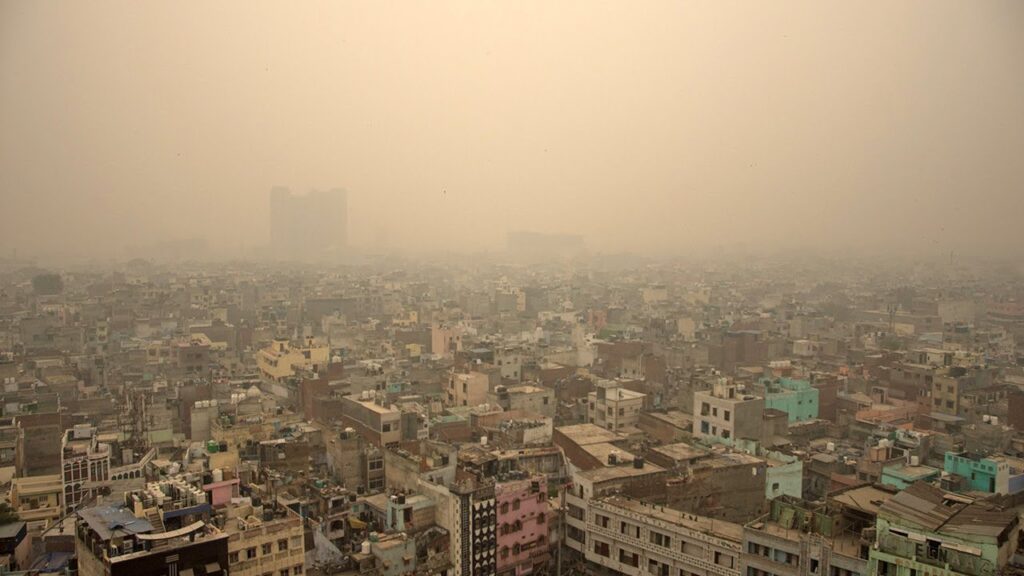
The toxic smog in Delhi is constantly being inhaled by its residents. The Air Quality Index is 371 on a scale of 500, where anything above 60 is unhealthy. The continuous stubble burning is contributing to nearly 25% of the smoke in the air. The Supreme Court has asked neighbouring states to assist the Delhi Government with this issue. The coastal city of Mumbai has taken a shocking turn for the worse with regards to air pollution. It has surpassed Delhi and reached a level of ‘poor’ air quality. Curiously, with India hosting major events of G20 at Mumbai in 2022, the city is woken up to cleaning up the mess in its air.
An analysis carried out by Climate Trends, based on the data from the Central Pollution Control Board, finds that Kolkata has recorded the highest rise in highly toxic PM 2.5 pollution levels within a month from October to November. Patna is second with 104% rise from October to November.
PM 2.5 is ultrafine particulate pollutants that can trigger serious diseases of the lungs. The permissible limit for PM 2.5 is 60mg. Delhi, however, recorded 183.4mg in November, followed by Gurugram and Ghaziabad with 152.7mg and 145.4mg respectively. Interestingly, as more and more NGO led efforts are involved in enumerating the impact of air pollution, responses seem largely technocratic and ungrounded in reality.
Nuclear Power and Climate Change

According to a statement made by Dr. Jitendra Singh, Union Minister of State (Independent Charge) Science & Technology, construction of 11 nuclear power reactors with a total capacity of 8,700 MW (including 500 MW by Bharatiya Nabhikiya Vidyut Nigam Ltd, a Government of India enterprise) is underway to augment ‘clean energy’ production in India. Besides, the Government has approved five new nuclear power projects. These decisions come at a time when irreversible dangers and threats posed by radioactive waste generated by nuclear reactors remain unresolved, as do their grave public health impacts.
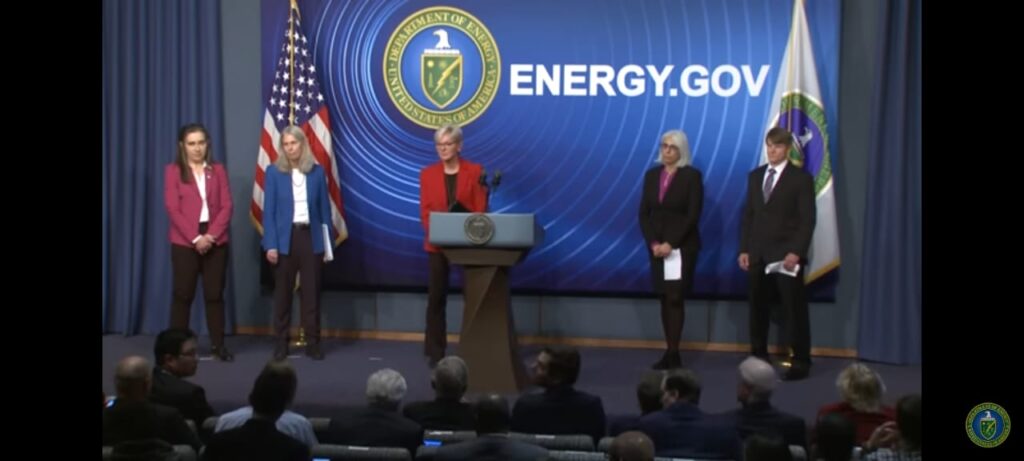
On 13th December 2022, the US Department of Energy announced that the National Ignition Facility had achieved a milestone, ‘fusion ignition’, that will pave the way for advancements in clean power. Such claims have been exposed as unreal and potentially promoting catastrophic nuclear weaponisation, argues nuclear expert M V Ramanna.
Giants of Coal Industry
Adani Group’s Godda coal-fired power plant in Jharkand has devastated paddies, plantain farms and palm groves in Godda, and commenced commercial operations this month. The project is dedicated to supply electricity to energy surplus Bangladesh – at five times the normative cost. Critics have pointed out that this project was implemented sidestepping a range of objections from environmental impact review boards, state officials and impacted communities, and is part of a pattern where Adani receives mega projects with the tacit approval of India’s Prime Minister Narendra Modi. Washington Post in a detailed analysis, reveals how “Adani’s net worth skyrocketed from $9 billion in 2020 to $127 billion this month” and calls this deal an “absolute gouge”.

Meanwhile in Chhattisgarh, a major coal mine destroying 1,898 hectares of forest land in Hasdeo Arand forests and adjoining villages was approved. This forest patch is estimated to contain 5 billion tonnes of coal.
Bio or not: Impact of Plastics

Scientists have noticed developmental abnormalities in immune cells, neural cells and skeletons of sea urchins, decreasing their survival chances. This has been attributed to the chemicals that leak out of newly made plastic pellets or ‘nurdles’ in Watergate Bay, Cornwall, the source of which is undoubtedly large corporations.
Amazon, one such large corporation, generated 709 million pounds of plastic in 2021, of which at least 26 million pounds will end up in the world’s waterways. Despite pressure from its shareholders, Amazon refuses to outline a plan for plastic reduction. Retracing the trail of Amazon.com plastic waste in Muzaffarnagar led the Bloomberg Green team to uncover that this junk pile of plastic arrives from North America along with waste paper, which is cheaper than wood pulp, and is used by companies to cater to the paper demands of the nation. The amount of such plastic waste imported to India is almost double of the amount (264,000 metric tons) that was legally imported in 2019, after which a ban was imposed. In 2022, the government again relaxed this ban, allowing import of certain types of plastic.
The most popular solution to dealing with plastic, i.e., stopping production of unnecessary plastics and recycling what has been produced, is becoming less reliable. REDcycle, an Australian company known for collecting soft-plastics and recycling them, has been unable to process all the plastic due to a lack of demand for recycled products. It has therefore resorted to storing the excess plastic in warehouses, creating a fire-hazard.

Meanwhile, there is bio-based plastics coming out! But all this begs the question if such unsustainable consumptive patterns must at all be sustained. Some issues associated with bio-based plastics are dependency on large expanses of land, water and energy; bioplastics can be loaded with the same toxic additives that are in traditional plastics; and they can still result in microplastics that pollute the environment. A recent study published in the journal Environmental Science and Technology found that about 74 tonnes of microplastics (equivalent to 3 million plastic bottles) fell from the air and settled on rooftops, gardens and other surfaces in Auckland, New Zealand in 2020.
India has declared it will widen the ambit of compulsory Extended Producer Responsibility (EPR) requirements to go beyond plastics, e-waste, rubber and tyres. It aims to utilise EPR as a tool for resource-use efficiency and circular economy.
Tourism and its implications

Recently, the Indian Environment Minister wrote to the Jharkhand Government requesting that it should promptly consider representations made by the people from the Jain community to amend the notification of the eco-sensitive zone around the Parasnath Sanctuary to exclude eco-tourism activities. Sammed Shikharji is the largest pilgrimage of the Jain community which is located on the Parasnath Hills in Giridih district of Jharkhand, that the government wants to use to promote religious tourism, which local people are resisting.
Positive Environmental Actions?
Britain has initiated new legally-binding regulations to be released in its Environmental Improvement Plan set to be published in January. It aims to halt species decline, restore water bodies, increase woodland cover, reduce waste and decrease air pollution. Further, California has approved a plan that aims to decrease CO2 emissions by 85% by 2045, by achieving carbon neutrality through reduced petroleum usage and electrifying its energy usage. Similarly, Belgium has decided to impose new taxes on its plane’s greenhouse gas emissions and noise, with the aim of decreasing air and noise pollution.

In efforts to preserve coral reefs, a new method was successfully implemented, where scientists working on the Great Barrier Reef froze and stored coral larvae that could eventually help rewild reefs threatened by climate change. So far, trials have been successful for small corals and the trials with larger corals are underway.
Soubadra Devy, ‘Canopy Lady of India’ as she is called, and who works in the Western Ghats, spoke on the importance of canopy research in understanding climate change-related responses in an interview with Mongabay. On the growing concern of declining pollinators, she highlights the crucial importance of protecting vegetation, particularly in climax forests, given the discovery of many pollinator species high up in the canopy, especially bees.
National Green Tribunal decisions on Environmental Impacts
The Indian Environment Minister told the Rajya Sabha that the National Green Tribunal has penalised the governments of Arunachal Pradesh, Haryana, Jharkhand, Karnataka, Nagaland, Punjab, Rajasthan, Telangana, Uttar Pradesh and Uttarakhand in multiple cases involving environment conservation. Environmental compensation was imposed by NGT-Delhi on Manipur, Nagaland, Arunachal Pradesh, Karnataka, Telangana, Punjab, Rajasthan, Maharashtra and West Bengal for not implementing Solid Waste and Sewage Treatment Plans and other environmental issues, according to information from CPCB.

The NGT passed a stay order on the 2018 notification by the Centre which gave local bodies (municipalities, development authorities, district panchayats) the power for appraisal of Environment Impact Assessments (EIA) for certain classes of construction projects, stating that this would dilute the existing mechanism and thus cannot be sustained. These classes of construction projects included those with built up area between 20,000 sqm and 50,000 sqm and industrial sheds, educational institutions, hospitals and hostels for educational institutions between 20,000 sq metre and 1,50,000 sq metre.
Madras High Court: Jaggi Vasudev’s Isha Foundation exempt from seeking prior environmental clearance

A division bench of the Madras High Court comprising acting Chief Justice T Raja and Justice D Krishnakumar, quashed a show cause notice issued by the Tamil Nadu Pollution Control Board which sought to prosecute Isha Foundation for having constructed several buildings during 2006 and 2014 in the foothills of Velliangiri in Coimbatore district without obtaining prior environmental clearance. The Foundation contention that it must be categorised as an educational institute, since it has a yoga centre and thereby exempt from the requirement of obtaining prior environmental clearance under the Environment Protection Amendment Rules, 2014, was upheld. In support of the foundation, the Union Government contended the Foundation did not require prior EC on similar grounds. Notwithstanding Tamil Nadu Pollution Control Board stauch defence that a massive yoga centre that draws hundreds of thousands cannot be an educational institute, the Madras High Court held that “educational institutions will mean not only schools colleges etc, but also those that deal with mental and moral development, to us it appears that yoga centre built by the petitioner may be included.”
Bills adopted by the Karnataka Legislative Council
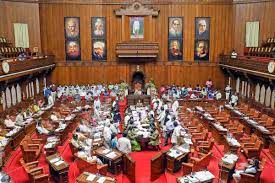
The Karnataka Land Revenue (Second Amendment) Bill, 2022 and the Karnataka (Border Area Development Authority (Amendment) Bill, 2022 have been tabled and adopted by the Karnataka Legislative Council on 26th December 2022. These Bills will now make it easier for land owners to convert agricultural land for other purposes. The Karnataka Land Revenue (Second Amendment) Bill, 2022 amends Sections 95 and 96 of the existing Act and provides for deemed approval for diversion of land use, if the Deputy Commissioner fails to make a decision within 15 days of receipt of an application from the occupant for conversion of land. The Karnataka (Border Area Development Authority (Amendment) Bill, 2022 empowers the government to add, alter and omit taluks from the authority. The Council also passed the Karnataka Land Revenue (Third Amendment) Bill, 2022 which aims at leasing government land spread up to 25 acres to families who are illegally cultivating plantation crops. Revenue Minister R. Ashoka has claimed that the objective of the Bill is to protect the interests of small farmers and to ensure that the landholders will not use the lands for commercial exploitation by developing resorts.
Conservation and Forest Rights
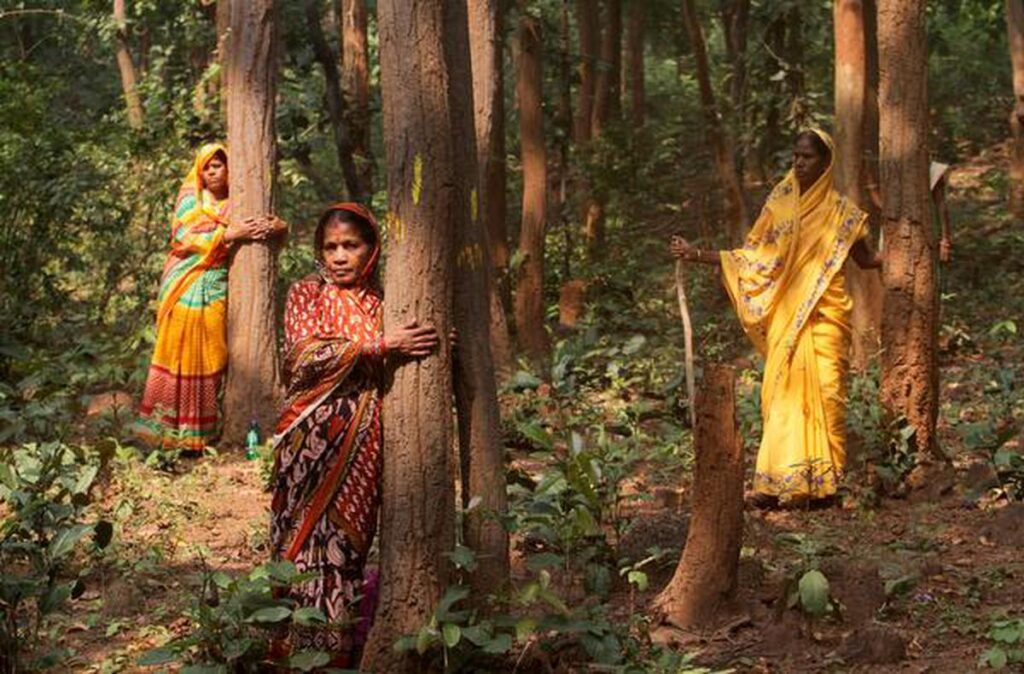
UN treaties make it obligatory that prior to declaration of UNESCO World Heritage Sites, local communities and inhabitants’ opinion is considered to assess potential implications on nature and livelihoods before a final decision is taken. But some stakeholders, located close to the world heritage sites in Karnataka were interviewed, and they were unaware of the process that led to such a declaration. Moreover, restrictions were enforced on people living within the eco-sensitive zones as soon as such areas were declared as protected areas and not necessarily after their declaration as world heritage sites.
On the bright side, across the Union Territory of Jammu and Kashmir, local people can now collect non-timber forest products including medicinal plants, under a policy (notified by the Forest, Ecology and Environment Department in pursuance to the Administrative Council Decision No.168/14/2022 dated December 19, 2022) which promotes sustainable collection and utilisation of these resources, creating livelihood opportunities led by the Panchayat Raj department.
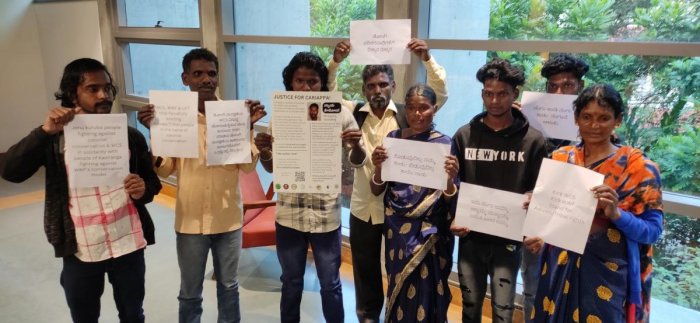
Seven members of the Jenu Kuruba tribe from Nagarahole forest protested at an environment literary event in Bengaluru to draw attention to the indigenous communities being forcefully relocated out of forests. The protestors targeted World Wide Fund for Nature-India (WWF-India), one of the event partners, as promoting extreme human rights violations in safeguarding forests.
Tree-felling and forest loss
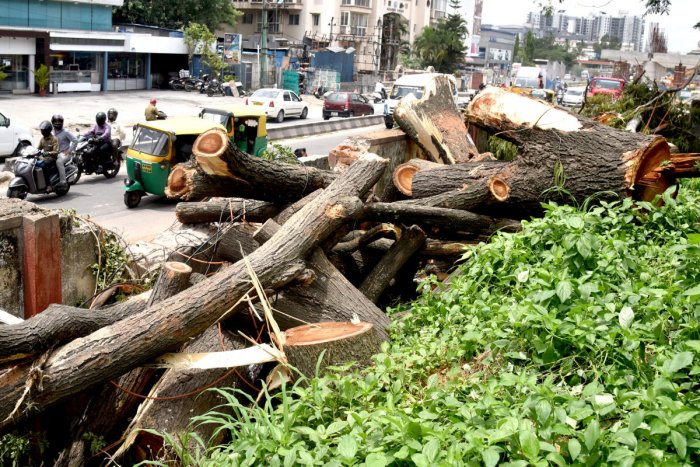
A case has been booked against a contractor in Rajarajeshwari Nagar, Bengaluru who illegally felled 12 trees for a public road widening project. The contractor did not seek permission from the Deputy Conservator of Forests, BBMP as he believed approvals would ‘take time’. Procedure requires tree felling approvals can be granted only if they are weak or pose a threat to the public, or has been approved by the Tree Expert Committee set up by the Karnataka High Court.
That said, BBMP forest cell has permitted the cutting of 268 trees to build the suburban railway line’s Mallige corridor between Byappanahalli and Chikkabanavara. The initial proposal was for 661 trees However, the BBMP’s tree expert committee decided to permit cutting of only 268 trees, retain 315 trees and translocate 58 trees to Yeshwantpur. However, 20 trees remain unaccounted for.
Meanwhile in Brazil, deforestation in the Cerrado savanna has hit a 7 year high as per government data, destroying an area of 10,689 sq km. This has resulted in destruction of habitats for threatened species and released huge amounts of greenhouse gases. The Cerrado, the world’s most species rich savanna, has turned into farms and ranches. Similarly, Mato Grosso do Sul, Brazil’s largest stretch of Atlantic Forest and most threatened biome, is being destroyed to establish monoculture plantations over the past 5 decades. This area is a major producer of corn, soy, wheat and barley.
An Archive of Environment Justice Matters 2022

In 2022, 15 Issues of Environment Justice Matters was published. Below is an archive along with a short summary of all the Issues in Volume 3.
Environment Justice Matters Vol. 3 Issue 1 | Prof. M K Prasad | The Mekedatu Project
EJM Vol. 3 Issue 1 discussed issues related to Genetically Modified Organisms (GMOs), amendments to the Biodiversity Act, the 9K movement to protect lakes in Bangalore, the Accessibility and Affordability of the metro, the POSCO Project and State Repression.
Environment Justice Matters Vol. 3 Issue 2 | Universal Periodic Review Of The Human Rights Council
EJM Vol. 3 Issue 2r discussed the Periodic Review of the Human Rights Council, Bangalore’s Budget change, weakening of the Wildlife Protection Act, claims of increased forest cover, worsening clearance system, global impacts of climate change, urban planning in Bangalore and impact on public health due to pollution.
EJM Vol. 3 Issue 3 discussed the Loktak lake issue in Manipur, a report on climate change, issues with renewable energy, failure to adhere to climate change commitments and environmental regulations, threats to public health, sustainable transport and infringement of the sovereignty of farmers.
EJM Vol. 3 Issue 4 reports the Lake Workshop conducted at Chitradurga, the 2040 DH Bengaluru Summit, gender justice in relation to climate change, impacts of the Russia-Ukraine war, Amazon rainforest, infringement on fundamental rights through many cases, fallacies of renewable energy and the Cauvery Calling Campaign.
Environment Justice Matters- Vol. 3 Issue 5 | It’s A Last-Minute Gift That Makes A Difference
EJM Vol. 3 Issue 5 summarises the work done by ESG in the past year. It then tackles issues such as climate change, religious polarisation, impact of renewable energy on local communities, green clearances, infringement on Right to Privacy, lack of road safety in Bangalore, rejuvenation of rivers and the mixed jurisprudence on environment by the courts.
Environment Justice Matters Vol. 3 Issue 6 | Large Gaps In Bengaluru’s Urban Planning Process & More
EJM Vol. 3 Issue 6 discusses the solid waste management consultation, ESG’s workshop on human-centred approach to designing, reimagining the implementation of renewable energy, gaps in urban planning, environmental jurisprudence, harm caused by dams, impact of climate change, advent and impact of microplastics and amendments diluting EIA.
Environment Justice Matters| Environment Day | Vol. 3 Issue 7
EJM Vol. 3 Issue 7 discusses the result of ESG’s PIL on lakes, ESG’s seminar on lake protection, success in protecting All Saints church, stay on Cubbon Park destruction, impact of heat wave on coal miners, environmental jurisprudence across the world, protection of forests and polarisation of minorities in Karnataka.
Environment Justice Matters Vol. 3 Issue 8
EJM Vol. 3 Issue 8 reports on ESG’s taluk level lake workshops, the Vombatkere movement, building water security, environmental governance, actions towards and against climate change and impacts of politics on biodiversity.
EJM Vol. 3 Issue 9 discusses the ESG-INHAF seminars conducted, dilution of environmental laws, tree plantation drives destroying grasslands, success in protecting Cubbon park, Nallur tamarind grove, designing green homes and the failure of Bangalore metro in complying with guidelines.
Environment Justice Matters Vol. 3 Issue 10
EJM Vol. 3 Issue 10 features ESG’s petition to stop the MoEF&CC from destroying biodiversity, ESG’s webinar on governance of cities, Indian forest act amendments, comparison of COVID responses, various protests to protect the environment, sustainable development, creating access to urban commons, conserving clean drinking water and suppression of voices by the government.
In this special EJM Vol. 3 Issue 11 edition, ESG celebrates 25 years. It discusses ESG’s various achievements including protecting the Lion Tailed Macaque, stopping the Dandeli Dam, preventing pollution by West Coast Paper Mills and resisting the POSCO project. It also talks about human rights violations, rampant regressive laws, Karnataka’s new water policy, the relocation of the African Cheetah and the Energy Conservation Bill Amendment.
EJM Vol. 3 Issue 12 discusses causes and impact of urban flooding, the various taluk level lake workshops, wide-ranging effect of climate change, the Great Nicobar project, compromising on Right of Expression by PM, contradictory message about agriculture in India, increase in GMOs, giving up biodiversity for trade, air pollution, successes of renewable energy and issues around the world surrounding environmental justice.
EJM Vol. 3 Issue 13 shed light on ESG’s PIL on biopiracy, SC case on GM mustard, Kenya HC success in stopping GMOs, actions protecting and actions destroying lakes, threat to forest cover due to false claims that it is improving, destruction of Great Nicobar, Aarey forest case, Hesaraghatta grasslands, poor implementation of Forest Rights Act 2006, NGT judgments, COP 27, inconsistent application of Land Acquisition Act, India’s stance on International Ivory Trade and transformations to sustainability.
Environment Justice Matters Vol. 3 Issue 14
EJM Vol. 3 Issue 14 discusses Karine’s book release on Seed Activism, ESG’s webinar on lake protection, ESG’s webinar on mapping, biopiracy in relation to GM mustard and parliament’s views, COP 15, Wildlife Conservation status, Wildlife (Protection) Amendment Act, NGT decisions, updates on Loktak lake, memorandum on indigenous people in USA and water crises in relation to tourism.
A happy and safe new year to all our readers!
Environment Support Group (Trust)
1572, 36th Cross, Ring Road , Banashankari II Stage
Bangalore 560070. INDIA
Tel: 91-80-26713560 | Voice/Fax: 91-80-26713316
Website: esgindia.org Email: socialmedia@esgindia.org
Follow our Facebook, Instagram, Linkedin and Twitter page
- ESG is also registered to secure support under the Corporate Social Responsibility (CSR) scheme of the Ministry of Corporate Affairs. Reg No. -CSR00017320
- Environment Support Group(ESG) is eligible to receive foreign donations/grants per the Foreign Contribution Regulation Act (FCRA)
- All donations to ESG from Indians are eligible for tax exemptions as per Sec. 80G of the Income Tax Act.
More details about ESG’s Financial Reports and Statutory Approvals are accessible here: https://esgindia.org/new/financials-and-statutory-clearances/
Your Monetary Contributions Keep Us Working
Donate Via UPI
(This QR Code is applicable ONLY to Indian/Domestic donors. Providing a PAN is a statutory requirement.
Kindly share the details of donation made to [email protected] after completion of UPI payment.)

